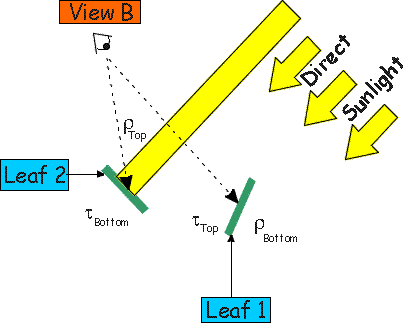The reflectance from a surface depends upon the direction of incident radiation (and its characteristics), the surface radiative properties and the direction from which the surface is being viewed.
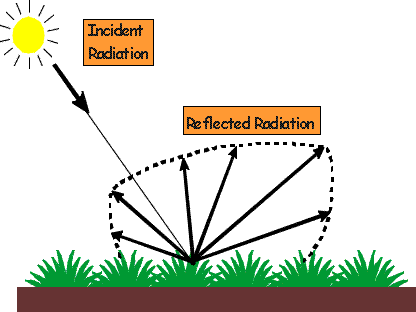
The directional dependence of the surface reflectance on viewing angle is often characterized by comparing the radiance of the actual surface to the radiance of an ideal Lambertian surface illuminated and viewed in the same manner as the surface of interest. The ratio is called a reflectance factor.
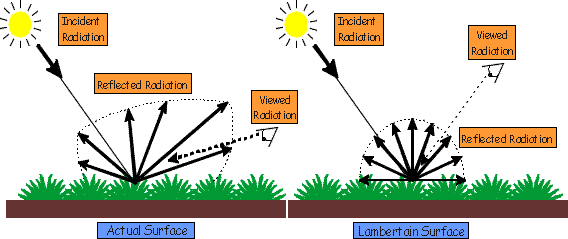
In general, the reflectance factor depends on the view angle (qv ,fv) and the solar zenith angle (qi ,fi). Since two directions are involved (qi ,qv), the term bidirectional reflectance factor (BRDF) is used.

In vegetative canopies, the distribution of leaves, the amount of leaf material and viewed fraction of leaf material in the direction of the sun and view affect the reflectance. Consider two flat leaves in the solar principal plane, each inclined at 45o with a solar zenith angle of 50o. LEAF 2 is nearly perpendicular to the sun's beam and is brightly illuminated while LEAF 1 is nearly parallel to the sun and is only dimly lit by the direct beam.
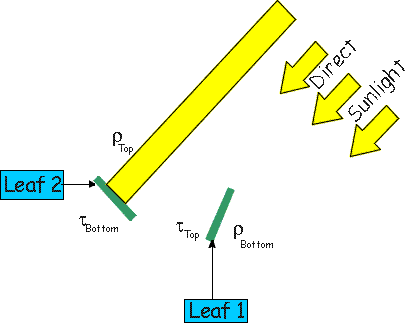
An observer with VIEW A ( i.e., a backscatter direction) will "see" LEAF 2 well, which is brightly lit, and will not "see" much of LEAF 1, which is dimly lit.
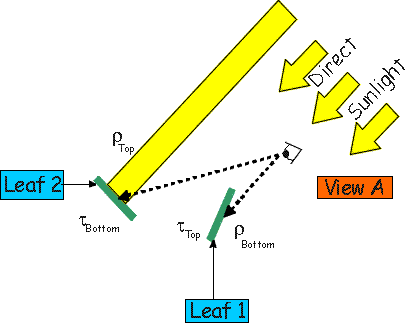
Thus, from VIEW A the scene appears bright.
An observer with VIEW B (i.e., a forward scatter direction) will "see" LEAF 1 well, which is dimly lit, and will not "see" much of LEAF 2, which is brightly lit.
Thus, from VIEW B the scene will appear darker from VIEW A.
